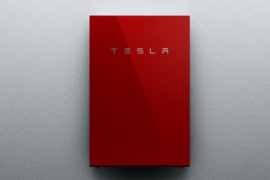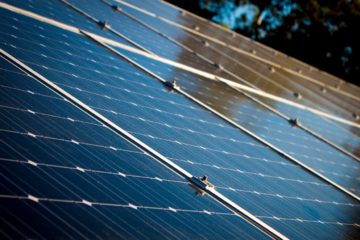A lot of people are starting to ask questions about Home Battery Energy Storage Systems and as one of the key, big disrupting technologies of the future we think it’s a must to try and answer as many of those questions as possible.
One – or two – of those important questions is just how “big” they are. This can be considered two ways as battery storage systems have both a physical dimensional size and an energy density storage size. So today we’re going to answer both of these questions and more.
How Physically Big Are Battery Storage Systems?

This answer will obviously depend on which battery you end up buying along with how many you buy. As a very quick example, the super popular Tesla Powerwall 2 comes in at 115cm x 75cm x 15cm (WxHxD).
This is how physically big 1 of them will be however there’s two things you should note. The first is that you may end up getting more than one if you need a bigger kWh sized battery array. The second is that you’ll also need other pieces of equipment to make it work.
This second point is quite important as many don’t realise that a battery needs a DC -> AC inverter as well as a “Gateway” box usually too. The Tesla Powerwall 2 is actually one of the better cases as it includes it’s own inverter inside it, plus is quite compact and self contained. However even with one of the most compact units you’ll still need the gateway box which controls how/when it gets charged or discharged.
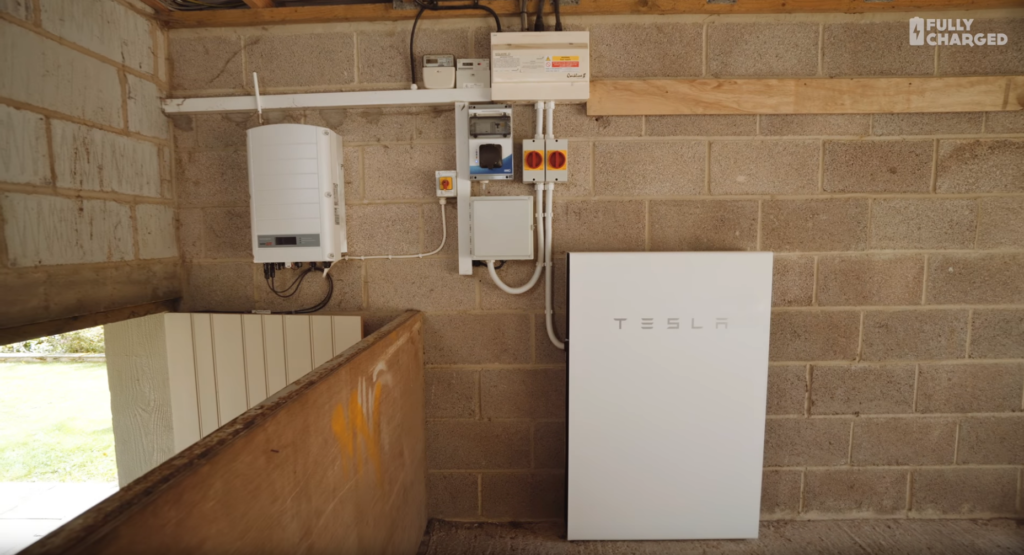
As you can see above in this Fully Charged video, you have extra electrical leads, big switches, fuse boxes and so on at a bare minimum. The bigger box on the far left is the DC->AC inverter for the solar system which is also common to have too.
So while you might go on the websites and see a physical dimension of X by Y by Z… just be aware that you’ll likely need a bit more room not just for the other bits, but also for appropriate spacing around those components for heat dissipation and safety. While it’s not going to take up acres of real estate it’s not something that can just be jammed in a corner so make sure you have a good open area for it.
You’ll also need a solid wall to attach the battery and other components to. This isn’t a huge concern for most though as a garage or car port wall caters to this well. If you want information on how physically big other battery systems are check out our Home Battery Energy Storage Comparison page which details all the most popular systems.
How Big In kWh’s Are Battery Storage Systems?
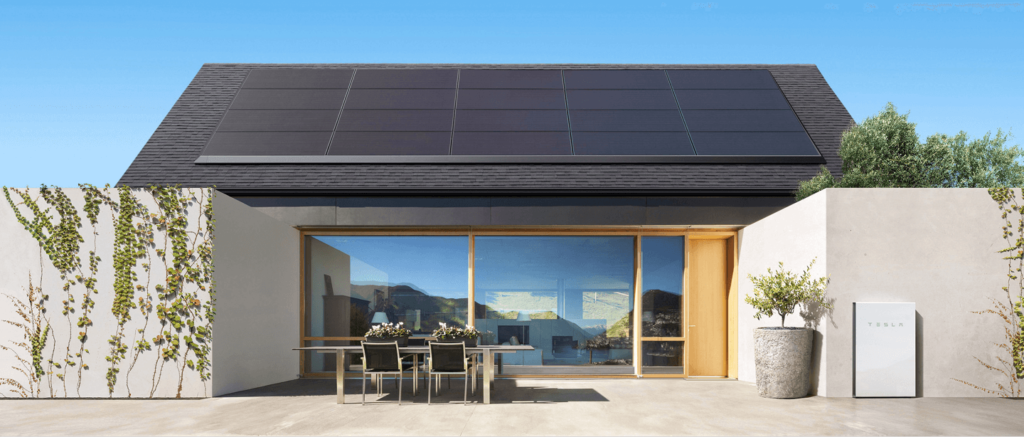
Now that we know how physically big these systems are we can get to the more important point of how much energy they store. Energy storage capacity is measured in Kilowatt Hours or kWh’s.
If you have 10 kWh’s of storage this means you can provide 1 kW of continuous power for 10 hours. Or you could provide 5 kW of continuous power for 2 hours.
One important point to note here is that all battery storage systems have a peak and continuous power ratings. This means that if your house is running solely off your battery and has a big heater or induction cooktop that draws a large amount of power while it’s starting up, that power draw must be under the “peak” power rating.
Obviously once the heater or whatever has started up and is continuously drawing power this also needs to be under the “steady” or “continuous” power rating.
So while your battery might have 14 kWh’s of energy stored in it, like what the Powerwall 2 can store, you will still only be able to ever provide 5kW of continuous power. So that 14 kWh’s will last just under 3 hours.
Getting back to our question though we can easily look up the storage size of many different popular battery systems. Some like the Tesla Powerwall 2 have 14 kWh’s. Other popular ones like the Enphase ones are only 1.2 kWh’s each. This is because they’re designed to be more modular and cheaper. This way you can by 1 of them… or 10 of them depending on your needs.
Home hattery storage systems also come in 6.5 kWh sizes (the LG Chem Resu 6.5) or 5 kWh’s (the sonnen Batterie). Again you can look at and compare all the top battery systems on our Home Battery Energy Storage Comparison page.
A Big Change Coming…
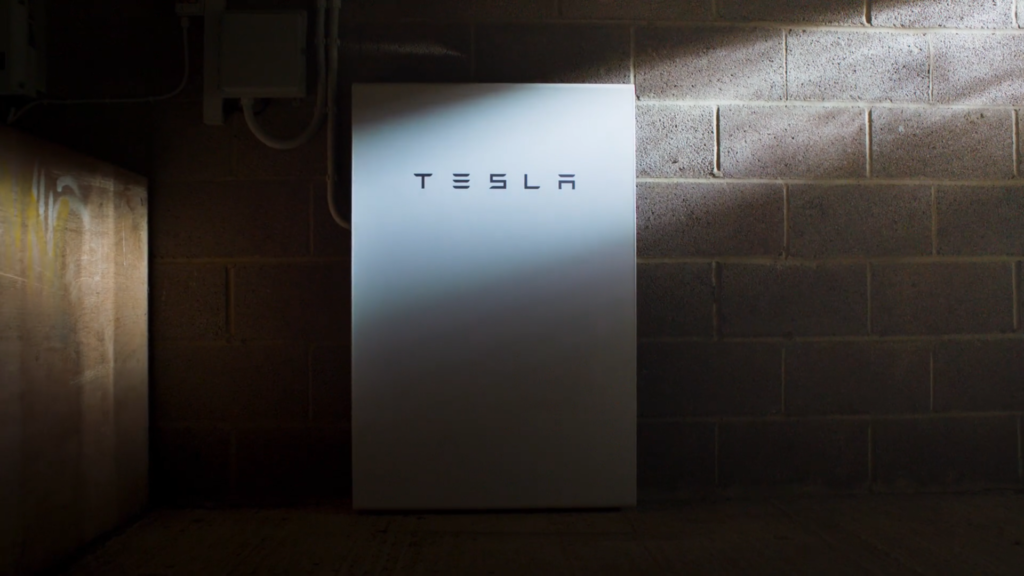
Solar power has already hugely disrupted Australia and the rest of the world. Currently we are basically the leaders in home solar roof top deployment. In December last year, we passed the 2 million homes with rooftop solar and things have only accelerated from then.
Given there’s around 9.5 million households in Australia total, that means about 22% of houses already have solar installed on their roofs. That’s a huge number of potential customers for home battery storage systems and companies know it.
From Tesla to LG to Samsung, they’re all flocking to Australia to try and get their prices down and sell their products as fast as possible. Currently there’s not a huge financial reason to buy a battery though due to their still high costs (unless you live in South Australia!).
Soon though these prices will drop below the price threshold just as solar did 5+ years ago and more and more people will be purchasing battery systems to go along with their solar rooftop systems.
If you want to learn more about Home Battery Storage Systems check out our full guide here or even see what’s in store for the future with our piece on Home Battery Storage Of The Future – 2018-2020 Predictions.
The benefits include: 1) How to get those silky smooth videos that everyone loves to watch, even if you're new 2) How to fly your drone, from taking off to the most advanced flight modes 3) Clear outlines of how to fly with step-by-step instructional demonstrations and more 4) Why flying indoors often results in new pilots crashing their drone 5) What other great 3rd party apps are out there to get the most out of your drone 6) A huge mistake many pilots make when storing their drone in the car and how to avoid it 7) How to do all of these things whilst flying safely and within your countries laws.


